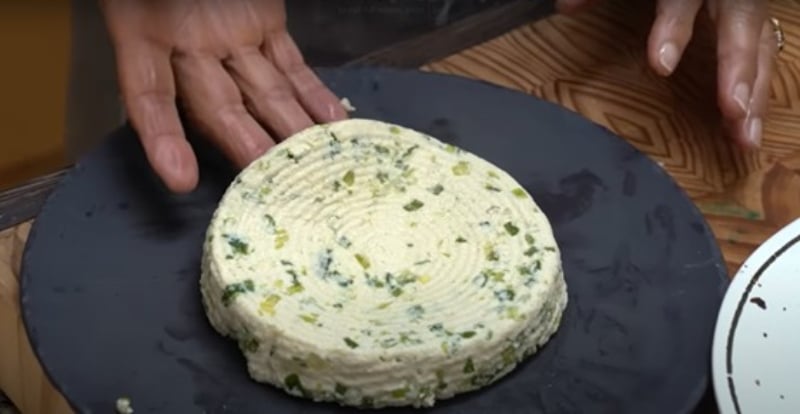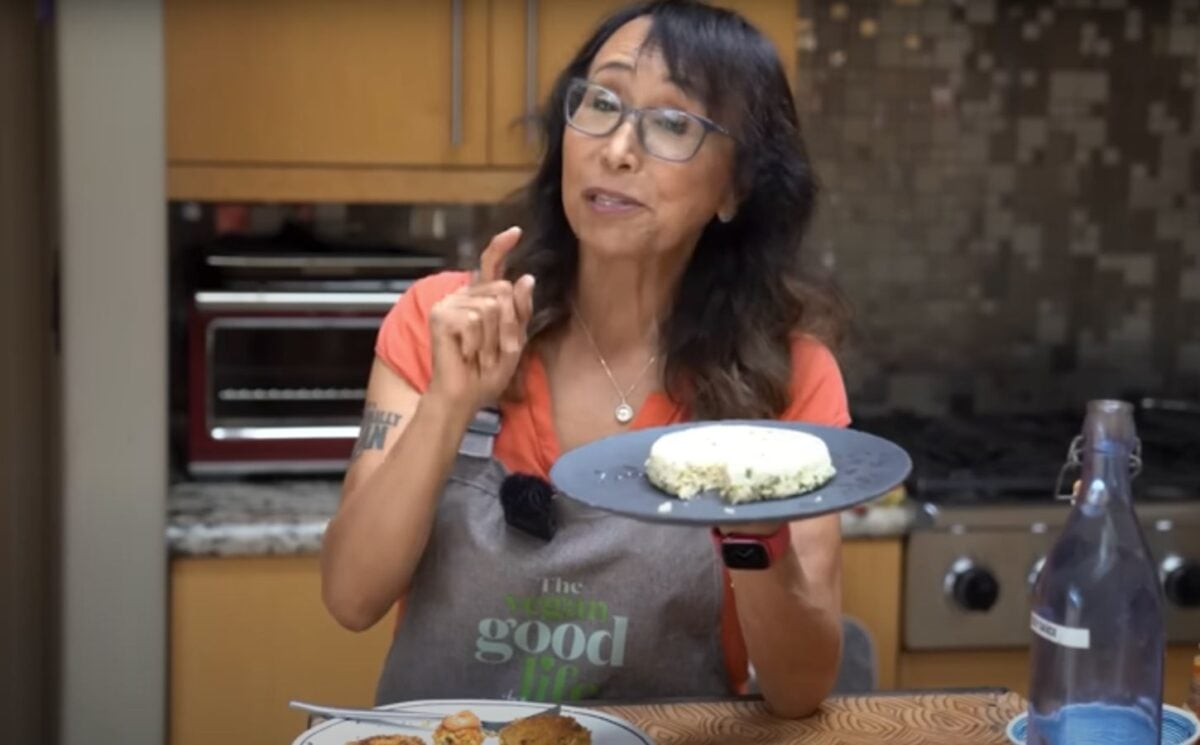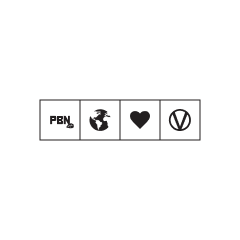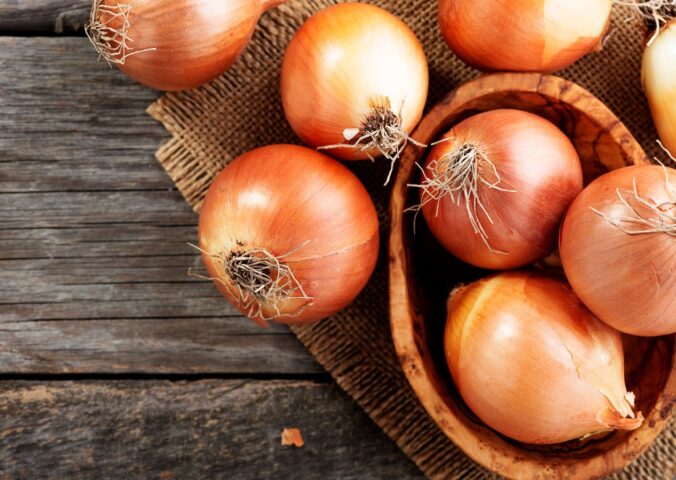Tofu might be a staple in plant-based kitchens, but few people realize just how easy it is to make from scratch. In a recent video on her YouTube channel, renowned vegan chef Miyoko Schinner walks viewers through the surprisingly simple process of making homemade tofu from scratch – no press required – and explains why doing so is not just about taste, but health, too.
Schinner, who founded Miyoko’s Creamery and is celebrated for elevating plant-based food to gourmet status, starts by emphasizing her preference for additive-free soy milk – ideally made at home. “A lot of the store-bought stuff has all sorts of stuff in it,” she says. Instead, she recommends using soy milk made with just soybeans and water to ensure the best flavor and proper protein concentration.
The process also produces okara, the fibrous pulp leftover from soy milk, which is high in both fiber and protein and perfect for repurposing. As a bonus, Schinner shows how to turn okara into crispy, fabulous vegan “crab” cakes.
Read more: 3 Tofu Marinades That Will Change Your Life
Why go homemade?
For Schinner, making tofu at home is all about control – over ingredients, texture, and nutrition.
“When you make your own homemade tofu, you can flavor it any way you like,” she says, adding everything from sun-dried tomatoes and basil to nutritional yeast or vegan chorizo as options. In her own batch, she mixes in fresh scallions from her garden.
From there, it takes only two ingredients: soy milk and a coagulant. Schinner explains the two main types: magnesium chloride (nigari) and calcium sulfate (gypsum). Both are naturally occurring minerals, and both affect the firmness and nutritional profile of your tofu. “If you use calcium sulfate, of course, you’re going to get a higher calcium tofu,” she says.
Once the soy milk is brought to a simmer, Schinner opts for magnesium chloride to start the magic. The proteins curdle and separate from the whey, creating the base of the tofu. From there, it’s just a matter of draining the curds with a sieve and some cheesecloth and letting them firm up – no fancy press required. “The more you press, the more water is extracted, and the firmer your tofu is going to be,” she explains.
And here’s the kicker- because you’re making it yourself, you decide how firm or soft it is. Schinner explains that American tofu tends to be very firm, while in Japan, softer, more delicate textures are preferred. The result can be shaped into blocks, patties, or any form you like.
For a traditional Japanese preparation, she cools her scallion tofu and tops it with a splash of soy sauce. “That’s how the Japanese eat tofu…cold tofu with a little soy sauce and often scallion,” she says. “Nothing like fresh tofu. That’s delicious.”

Bonus: zero-waste vegan crab cakes
Schinner doesn’t let anything go to waste, and the okara left behind from making soy milk gets transformed into San Francisco–style vegan crab cakes. “What does the okara do? It provides sort of that flaky consistency that we might be looking for in a vegan crab cake,” she explains.
She mixes the okara with tofu, capers, parsley, Old Bay seasoning, nori sheets, and gluten-free breadcrumbs to create a seafood-inspired flavor and texture. “Seaweed is so good for you,” she notes, pointing out its iodine, calcium, and magnesium content. After frying them in olive oil from her own grove, she tops them with a smoky wasabi mayo.
Schinner’s tofu tutorial is more than a kitchen how-to – it’s a call to rethink what fresh, whole food can look like in a plant-based lifestyle. With just a few ingredients and a bit of time, tofu can go from bland store-bought blocks to nutrient-packed flavor bombs, customized exactly how you like them.
And for those still on the fence? “Homemade tofu is so easy to make,” Schinner insists. Once you try it, you might never go back.
Find more healthy plant-based recipe tutorials on Schinner’s YouTube channel.
Read more: ‘I Tried The Viral Tofu Pancakes With 30g Of Protein’






